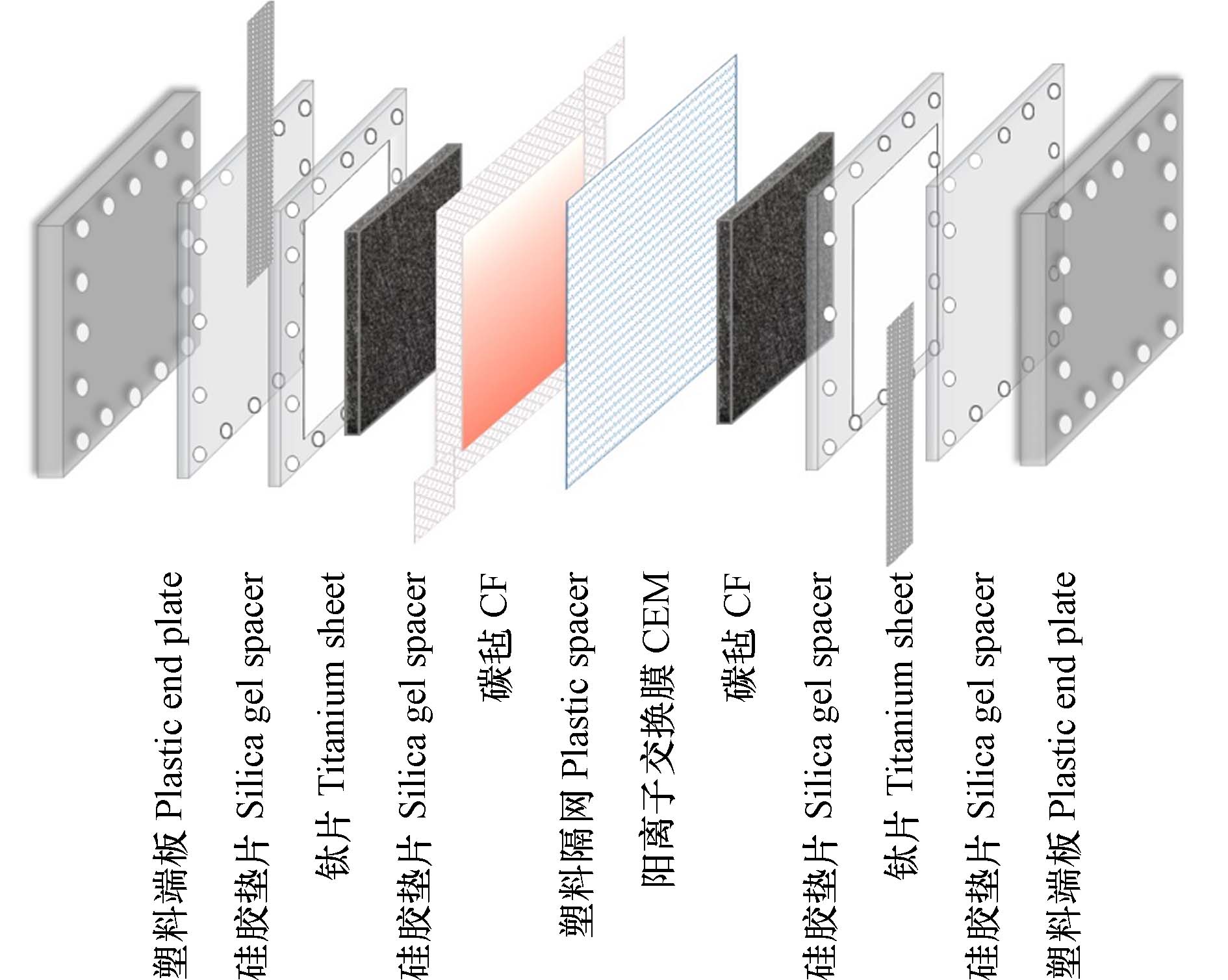-
随着人类健康越来越受到人们的重视,农用地土壤安全性问题已然成为亟待解决的关键问题之一。土壤重金属因其难降解性、易移动且具毒性的特性[1-2],直接或者间接通过土壤、动物以及植物循环到人类身体内,给广大居民的生命安全造成威胁。除大气和水体外,土壤是重金属汇集的另一个重要场所[3],土壤累积重金属达到阀值或国家给定的标准后,不仅会影响土壤的组成成分、结构以及理化性质,而且会极大地威胁到人类赖以生存的环境,并最终造成土壤重金属污染。农用地土壤污染是多要素、多尺度、多过程相互影响的结果,镉、汞、铅、砷、铬、铜、镍和锌是土壤重金属污染中最常见的8类元素。近几年,土壤中重金属的累积状况以及由此带来的生态风险,成为土壤环境研究领域的一个热点问题[4]。
在进行污染程度评价时,多数研究利用单因子指数[5]、内梅罗综合污染指数法[6-7]、地累积指数法[8-9]等方法对污染程度进行评价,在此基础上,本研究利用最新的土壤环境质量评价标准对土壤污染程度进行评价。许多的研究集中于时间或者空间上的土壤重金属含量变化,少数研究将时空叠加进行动态土壤污染状况分析,如对土壤重金属含量进行空间预测[10-12]、在时间序列下土壤重金属浓度的变化[13-14]、污染源解析[15-16]等,这些研究在一定程度上可以反映污染现状以及污染趋势。由于土壤重金属有很强的迁移性和聚集性,空间分布大多是由历史和现在的人为活动造成的,因此,在目前土壤环境问题日趋严峻的形势下,土壤环境的保护和治理迫切需要准确掌握区域土壤重金属含量的时空变化信息,将历史数据和现今数据进行比对,分析出土壤重金属污染是属于加强型、减弱型还是保持不变型,这对土壤重金属污染解析以及今后在管理控制方面均有很大的帮助。同时,土壤重金属含量是评价土壤环境质量的重要因素,掌握土壤重金属的空间分布以及变化趋势对评价土壤环境质量类别具有重要的理论和实际意义。
本研究描述了2008年和2018年研究区内土壤中8类重金属浓度的空间格局和时间变化,初步反应耒水流域土壤重金属含量分布状况;采用不同的方法评价2期土壤重金属的污染程度,从而阐明2个时间段研究区内重金属污染情况;叠加分析2期数据的时空变异情况,重点分析出研究区污染加强位置,为今后土壤污染治理以及管控提供参考。
全文HTML
-
耒水流域位于湖南省的东南部,同时也位于湘江流域的东南部,地理坐标为112°38′~113°26′E,25°28′~26°21′N,流经永兴县、资兴市、苏仙区、北湖区、桂阳县和耒阳市6个行政区。湘江流域(郴州)内支流众多,由于研究尺度的原因,本研究选取西河和部分耒水流域(东江镇至塘门口镇)作为本次研究的研究区。西河为湘江的2级支流,被苏仙区人民亲切的称之为“母亲河”。其发源于北湖石鼓山,止于永兴塘市,全长136 km(都在郴州市境内),流域面积2 037 km2(郴州市境内1 618 km2)[17];耒水为湘江的一级支流,发源于湖南省桂东县烟竹堡,于衡阳市珠晖区汇入湘江。西河是耒水中重要的支流之一,耒水干流全长453 km,河道平均坡降0.077%,流域面积11 783 km2,其河道特点是坡降大,多局部弯曲,总体属于山溪性河流[18]。研究区内矿产资源丰富,其中有色金属矿包括铅、锌、铜、锡、钼、铋、锑、钨、镁等,黑色金属包括铁、锰等。西河和耒水沿河企业分布众多,主要为黑色有色金属冶炼和延压业、黑色有色金属矿采选业以及化学原料和化学制品业(图1)。第一产业的大力推进不仅为经济发展做了贡献,也推动了当地民生的发展,但排放的工业“三废”也进入土壤,使土壤环境质量发生恶化。本研究主要以研究区内西河和耒水2条河流为线索,进而比对2期土壤重金属数据的变化。
-
现场确定采样点位后,以确定点位为中心划定采样区域,采样范围一般为20 m×20 m;当地形地貌及土壤利用方式复杂,样点代表性差时,则扩大至100 m×100 m。以确定点位为中心,此次采样采用双对角线5点采样法,5点采样量基本一致,采样量总计不少于2 500 g,每个采样点均为土壤混合样,2008年和2018年采样点分别为157个和121个。农用地土壤的采样深度一般为0~20 cm,工矿用地以及城镇周围土壤采集深度为0~60 cm,果园林地类土壤样品采集深度也为0~60 cm。2008年和2018年2期采样点空间分布如图2所示。
所有样品均在室温下风干,去杂,研磨,然后过100目尼龙筛(孔径约0.149 mm),处理后的样品要及时放入冷藏箱,在4 ℃以下避光保存,最后封存测试。所有用来盛放样品或反应物的容器都要用4 mol·L−1的HNO3浸泡过夜,然后用超声波双频清洗机进行清洗,最后用去离子水反复清洗。所用药品全部为分析纯。本次土壤样品的测定指标为Cd、Hg、As、Pb、Cr、Cu、Ni、Zn 8类重金属全量含量。按照GB 15618-2018标准中推荐的方法[19]测定Hg和As重金属的全量含量,依据HJ 766-2015标准中推荐的方法[20]测定Cd、Pb、Ni、Cu、Zn和Cr重金属全量。
表层土壤样品测定指标包括8类重金属元素的全量含量。Hg和As元素利用原子荧光光谱法(atomic fluorescence spectrometry,AFS)进行测定,检出限分别为0.002 mg·kg−1和0.01 mg·kg−1;Cd、Pb、Ni和Cu分析元素利用电感耦合等离子体质谱法(inductively coupled plasma-mass spectrometry,ICP-MS)进行测定[21],检出限分别为0.03、2.0、0.6和0.3 mg·kg−1;Zn和Cr分析元素利用电感耦合等离子体原子发射光谱法(inductively coupled plasma atomic emission spectrometer,ICP-AES)进行测定,检出限分别为0.4 mg·kg−1和2.0 mg·kg−1;在测定过程中,每测定10个样品用重金属标准溶液进行标准曲线的校正,以保证仪器测定误差范围控制在2%以内。另外,样品分析所用试剂均为优级纯,在质量控制方面,分析测试时加入国家标准物质土壤样品GSS系列,测定结果均在误差允许范围内。属于同一批次的样品在测试时,分析元素需要满足回收率为90%~110%,均在国标标准[22]范围之内,然后进行样品测试。
-
目前,应用广泛的土壤重金属污染评价方法主要有以下5种:单因子污染评价指数法;综合污染指数法(又称内梅罗综合污染指数法);地积累指数法[23];生态危害指数法[24];生态环境部国家市场监督管理总局最新发布的《土壤环境质量 农用地 土壤污染风险管控标准(试行)》(GB 15618-2018)中的评价方法。本研究选用单因子评价指数法、综合污染指数法以及土壤环境质量类别法来评价土壤污染程度。
单因子污染评价指数按式(1)计算。
式中:Pi为土壤中单项重金属i的污染指数;Ci为重金属i的实测值,mg·kg −1;Si为根据需要选取的重金属i评价标准,mg·kg −1,本研究选取湖南省土壤环境背景值为标准。将污染程度通常作如下划分[21]:Pi ≤1.00为非污染;1.00<Pi≤2.00为轻度污染;2.00<Pi≤3.00为中度污染;Pi>3.00为重度污染。
综合污染指数法(内梅罗综合污染指数法)按式(2)计算。
式中:P为所有重金属元素的内梅罗综合污染指数;pi,max为单因子污染指数的最大值;
¯pi 为单因子污染指数的平均值。通常将污染程度作如下划分[25]:P≤0.70为安全;0.70<P≤1.00为警戒;1.00<P≤2.00为轻度污染;2.00<P≤3.00为中度污染;P>3.00为重度污染。依据《土壤环境质量农用地 土壤污染风险管控标准(试行)》(GB 15618-2018)中的筛选值Si和管制值Gi,基于表层土壤中Cd、Hg、As、Pb、Cr、Cu、Zn、Ni的含量Ci,评价农用地土壤污染的风险(本研究将此方法称为土壤环境质量类别评估法),Cd、Hg、As、Pb、Cr分为Ⅰ类、Ⅱ类和Ⅲ类,Cu、Zn、Ni分为Ⅰ类和Ⅱ类,土壤环境质量类别具体划分如下。
Ⅰ类:Ci ≤ Si,土壤污染风险低,可忽略,应划为优先保护类。
Ⅱ类:Si < Ci ≤ Gi,可能存在土壤污染风险,但风险可控,应划为安全利用类。
Ⅲ类:Ci > Gi,土壤存在较高污染风险,应划为严格管控类。
1.1. 研究区概况
1.2. 采样及测定方法
1.3. 研究方法
-
对2008年的157个历史点位数据和2018年最新采集的121个土壤样品进行重金属元素描述性统计分析,得出Cd、Hg、As、Pb、Cr、Cu、Ni、Zn等8类土壤重金属元素含量的最大值、最小值、平均值、标准偏差、峰态系数、偏度系数以及变异系数(见表1)。
湖南省Cd、Hg、As、Pb、Cr、Cu、Ni、Zn 8类土壤重金属元素的土壤环境背景值[26]均超过了国家土壤环境背景值[27]。除Cr外(Cr的含量平均数超过了湖南省土壤环境背景值但未超过国家土壤环境背景值),2期8类土壤重金属元素的含量平均数均超过了湖南省土壤环境背景值和国家土壤环境背景值:2008年8类土壤重金属元素的含量平均数分别是湖南省土壤环境背景值的9.00、1.56、2.06、4.27、0.96、1.30、1.79、1.00倍,是全国土壤背景值的11.69、2.78、2.88、4.87、1.12、1.57、2.28、1.19倍;2018年8类土壤重金属元素的含量平均数分别是湖南省土壤环境背景值的12.55、1.36、2.16、5.56、0.99、1.49、2.40、1.02倍,是国家土壤环境背景值的16.30、2.44、3.03、6.35、1.16、1.80、3.06、1.20倍,这说明表层土壤整体表现为以Cd和Pb为主的土壤重金属聚集。当土壤重金属元素的变异系数小于20%时,被定义为低变异度;变异系数为21%~50%,被定义为中变异度;变异系数为51%~100%,被定义为高变异度;变异系数高于100%时,被定义为极高变异度[28]。2008年,仅Cr为中度变异,Hg、Cu和Ni为高度变异,Cd、As、Pb和Zn为极高变异度,2018年,Cr和Ni属于中变异度,Hg、As和Cu属于高变异度,Cd、Pb和Zn属于极高变异度;2期变异系数比对说明,研究区8类土壤重金属含量值变化幅度较大,连续性较弱,空间变异性较大,Cd和Pb受外界因子影响较为明显。
-
由2期表层土壤重金属单因子指数(图3及表2)可知,2008年和2018年的单因子指数Pi平均值按大小排序为Cd> Pb > As >Zn > Hg > Cu > Ni >Cr和Cd> Pb > Zn >As> Cu >Hg> Ni >Cr。2期数据排前2位的均为Cd和Pb,排最后2位的均为Ni和Cr;2期数据Cd的重度污染点位均超过80%,Cr和Ni的非污染点位均超过60%。根据单因子指数平均值做出下列分级:2008年,Cd和Pb属于重度污染,As属于中度污染,Hg、Cu、Zn和Ni属于轻度污染,Cr属于非污染;2018年,Cd和Pb属于重度污染且Cd无非污染点位,As和Zn属于中度污染,Hg、Cu和Ni属于轻度污染,仅Cr属于非污染。由单因子指数法对2期数据比对可知,Cd和Pb在2008—2018年一直处于重度污染状态,且重度污染占比有所上升;Cr一直处于非污染状态,各部分比例总体上保持不变,说明Cr基本无外源输入;Zn由原来的轻度污染状态转变为中度污染状态,说明Zn可能受到了外界的影响,导致超标点位增加;其余元素的等级均未发生变化,超标点位略有波动,总体上保持稳定。
由研究区内梅罗综合污染指数评价结果(表3)可知,2008年,内梅罗综合污染指数大于3和介于1~2的样本数量最多,分别为324个和691个,说明2008年研究区污染状况总体呈轻度污染;2018年,内梅罗综合污染指数同样是大于3和介于1~2的样本数量最多,分别为248个和526个,表明研究区整体仍处于轻度污染。经过2期数据比对可知,研究区内全部采样点综合指数均超过了安全值,2008—2018年,警戒和轻度污染比例略有下降,中度污染比例明显增加,这进一步说明研究区有增强污染的趋势。
以Cd、Hg、As、Pb、Cr、Cu、Ni、Zn为基础,对研究区2期表层土壤点位评判结果进行统计分析(表4)。从总体上看,2008年,除Cd以外,Hg、As、Pb、Cr、Cu、Ni、Zn优先保护类占比最大,均大于60%;仅Cd、As、Pb元素存在严格管控类,Cd严格管控类占9.55%,安全利用类占78.34%,As严格管控类占1.27%,Pb严格管控类占1.91%。2018年,除Cd和Pb外,Hg、As、Cr、Cu、Ni、Zn优先保护类占比最大,优先保护类点位均超过60%,存在严格管控类点位分别为Cd、As、Pb,其中Cd严格管控类占13.22%,安全利用类占82.64%,As严格管控类占2.48%,Pb严格管控类占3.31%。2018年较2008年,环境质量类别数据评价结果Cd、As、Pb严格管控类点位比例均变大,这与单因子指数评价的结果相吻合,出现变化较大的是Zn。2008年,Zn的安全利用类占比15.92%,2018年Zn的安全利用类占比97.54%,安全利用类比例变化幅度为81.62%,在单因子指数评价中,Zn非污染占比降低,污染占比升高,与环境质量类别法评价结果相一致,说明研究区土壤中存在Cd、As、Pb污染,也存在Zn污染趋势。
-
对2期数据进行空间插值得出表层土壤重金属的空间分布图(图4)。克里金插值法(Kriging)和反距离加权插值法(IDW)是2种常用插值方法。与克里金插值法不同的是,IDW不需要数据遵循正态分布[29]。IDW是一种相对简单和广泛使用的方法,它不需要基于对数据统计分布的任何假设[30]。REIMANN等[31]研究表明,不太依赖统计假设的技术应该是首选。因此,我们使用IDW来绘制研究区内土壤重金属的空间分布图。2期数据的污染分布格局基本一致,因此,本研究只将2018年的土壤重金属空间分布图列出。从整体上看,Cd和As,Hg和Pb,Cu和Zn,Cr和Ni两两空间分布格局相似。Cd和As高值区主要集中于研究区的西南部和东北部,即西河中上游地区和耒水下游以及2河交汇处,污染程度较轻的主要分布与西河上游的源头区、西河中下游以及耒水中部;Hg和Pb高值区主要分布于西河中上游地区、北湖区的西部和苏仙区的东北部;Cu和Zn除西河中上游地区有部分高值区,其余地区污染均不显著;Cr和Ni污染分布格局基本一致,西河中上游和中游地区零星地分布着几块高值区,其余地区均为非污染状态。高值区主要是由于这些区域分布了大量的重工业企业(见图1),其排放的“三废”通过大气沉降、污水倾倒以及固体废物的堆积等方式使得重金属进入土壤,造成土壤重金属超标,从而影响土壤环境质量。
空间插值可以整体反映土壤重金属含量的分布情况,而空间地图几何分析可以将2期空间插值结果进行叠加分析,本研究利用这种方法将研究区2008年和2018年反距离空间插值结果进行对比,从而分析出土壤重金属污染变化状况;利用空间地图几何分析法得出2008—2018年研究区土壤重金属的含量的时空变异图(图5)。可以看出,8类表层土壤重金属在3个高值区(西河中上游地区、耒水上游地区和耒水下游地区)均为污染增强型,说明2008—2018年3个工业聚集区土壤的污染程度进一步增加。按8类土壤重金属含量的增幅排序,结果为Pb(25.47%)>Hg(22.08%)>Ni(16.05%)>Zn(11.83%)>Cu(5.75%)>Cr(5.23%)>Cd (4.53%)>As(3.71%),重金属元素含量都存在增强的趋势,其中Pb的增幅最大,Hg次之,说明这10年间Pb和Hg在土壤中累积较为严重,研究区内以冶炼和矿物开采企业为主,矿物开采也能引起Pb、Cd和Zn在土壤中富集[32],工业区会以Cd和Pb累积为主[33],进而形成以Pb等元素为主导的污染分布。按8类土壤重金属含量面积增加的百分比排序,结果为Zn> Pb> Cu>As>Cr>Ni>Cd>Hg,其中Zn、Cu和Hg含量增加区主要位于西河上游、西河下游和耒水下游;Pb和As增长区主要位于西河中上游以及耒水西部;Cr的增加区较为分散,主要集中于西河的上中游和耒水中游的东部地区;Ni主要分布于西河和耒水东部区域;Cd主要集中于耒水下游和西河中上游区域。
2.1. 表层土壤重金属元素的统计分析
2.2. 表层土壤环境质量初步评价
2.3. 表层土壤重金属时空变异解析
-
1)研究区整体存在土壤重金属污染,研究区内除Cr外,其余7类表层土壤重金属元素均存在点位超标的情况,含量均值都超过湖南省土壤环境背景值和国家土壤环境背景值的1倍以上,其中Cd超标最严重,超过了国家土壤环境背景值10倍以上;2期数据中Cd、Pb、Zn的变异系数均大于100%,说明这3种元素受外界因素影响很大,企业影响概率较大。
2)从整体来看,有企业分布的土壤环境质量大幅下降。从单因子评价指数角度出发,除Cr外,Cd、Hg、As、Pb、Cu、Ni、Zn 7类元素均在不同程度上表现出一定的污染性,其中Cd、As、Pb尤为突出;从内梅罗综合污染指数角度出发,研究区内全部采样点综合指数均超过了安全值,中度污染比例明显增加,研究区有增强污染的趋势;从环境质量类别法角度出发,2008—2018年均只有Cd、As、Pb有严格管控类点位且点位占比均增大,其中Cd严格管控类点位占比最大,这3种元素污染程度均较高。
3) 2期数据的污染分布格局基本一致,从整体上看,Cd和As,Hg和Pb,Cu和Zn,Cr和Ni两两空间分布格局具有相似性,单个元素之间存在差异性;2期数据的空间地图几何分析表明,在企业分布密度较大的3个高值区内,Pb和Hg在10年内聚集明显,Pb污染面积进一步增大,Hg污染分布格局基本保持不变。为防止污染面积扩大,建议相关部门应引起足够重视;重金属含量是土壤环境质量评价中的一个重要指标,对土壤环境质量评价的主要目的是减弱重金属对生态以及人体的危害,因此,在进行土壤重金属污染评价时,应考虑更多的贡献因素,以准确评价土壤环境质量。






 下载:
下载:

















